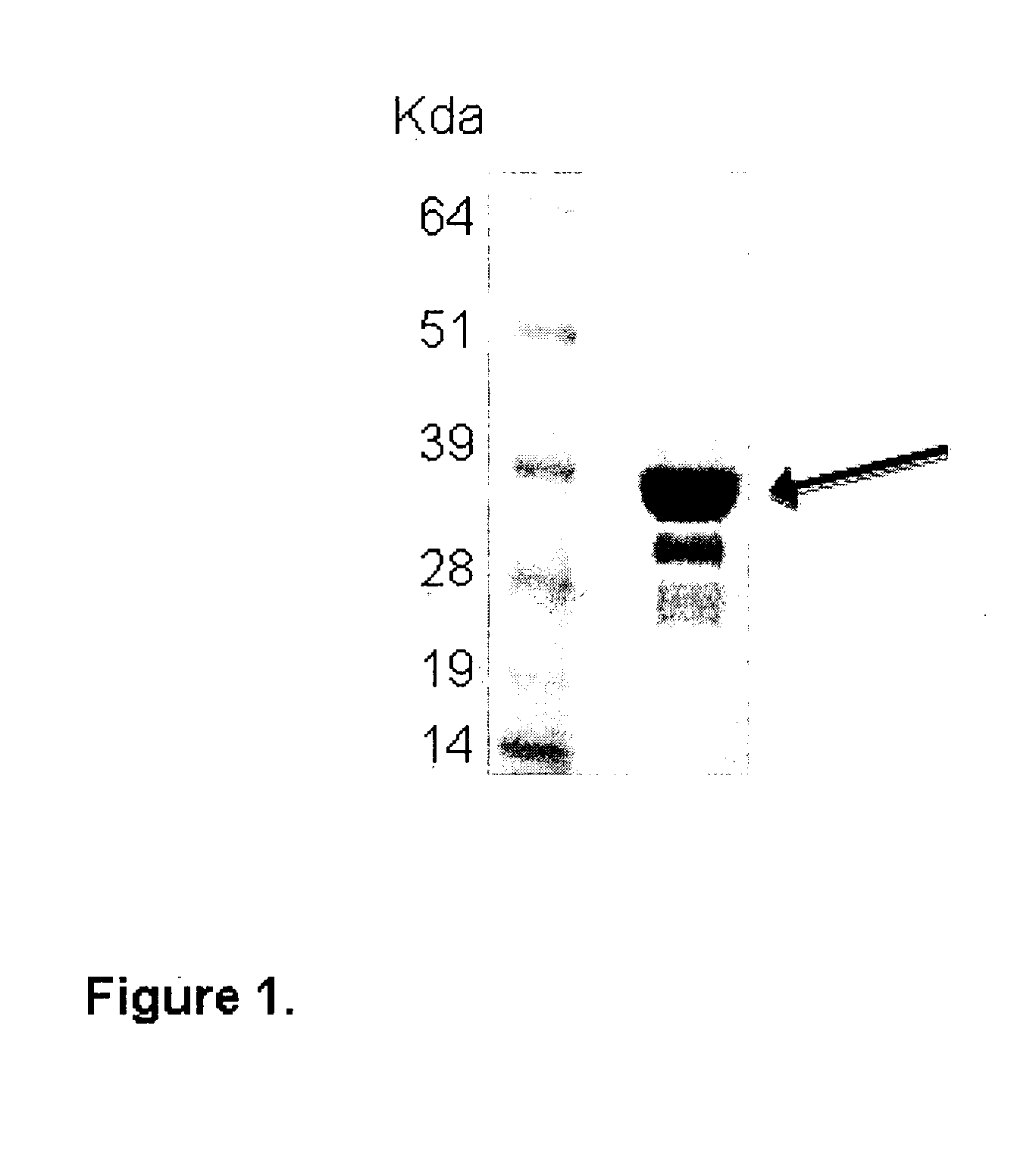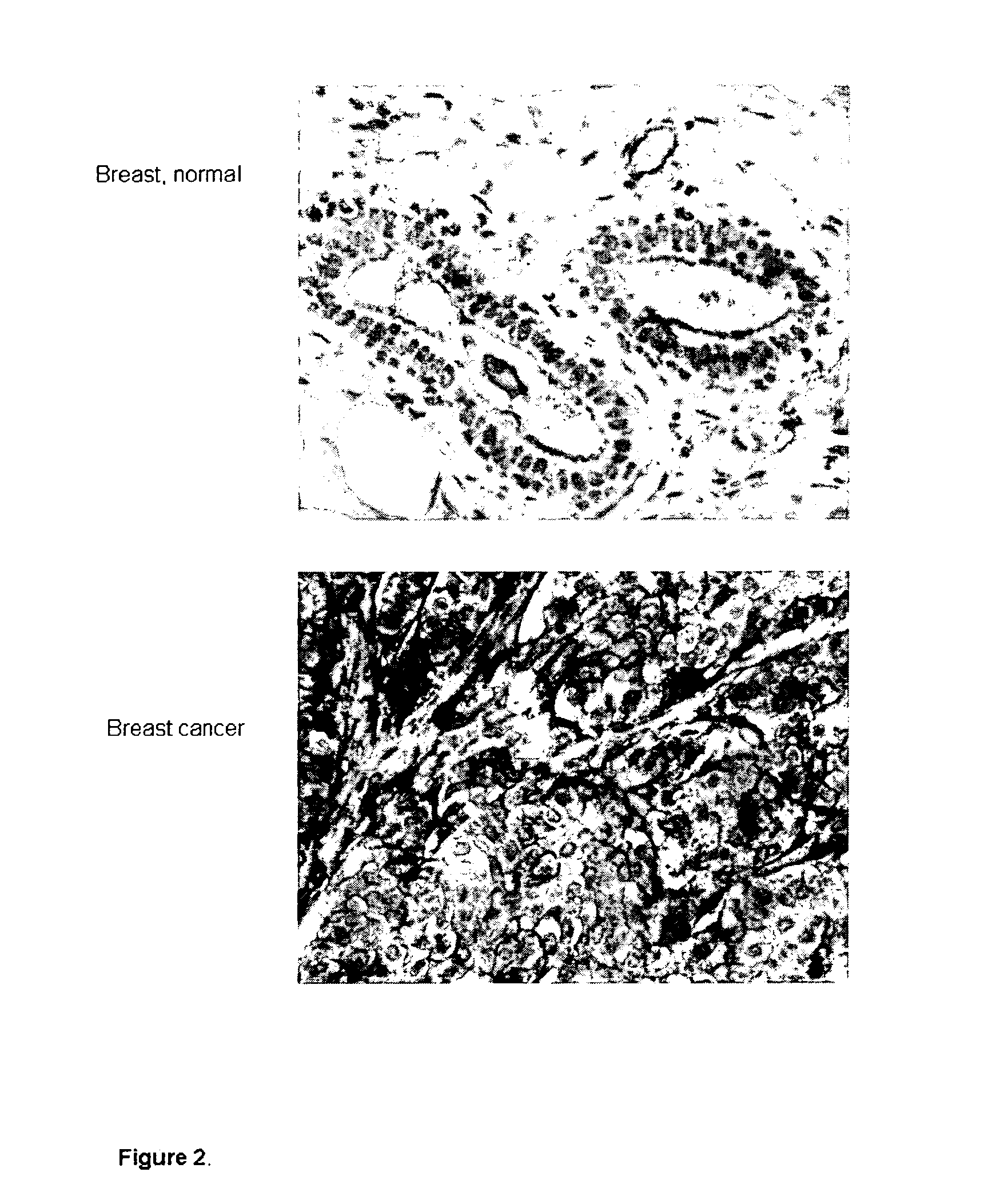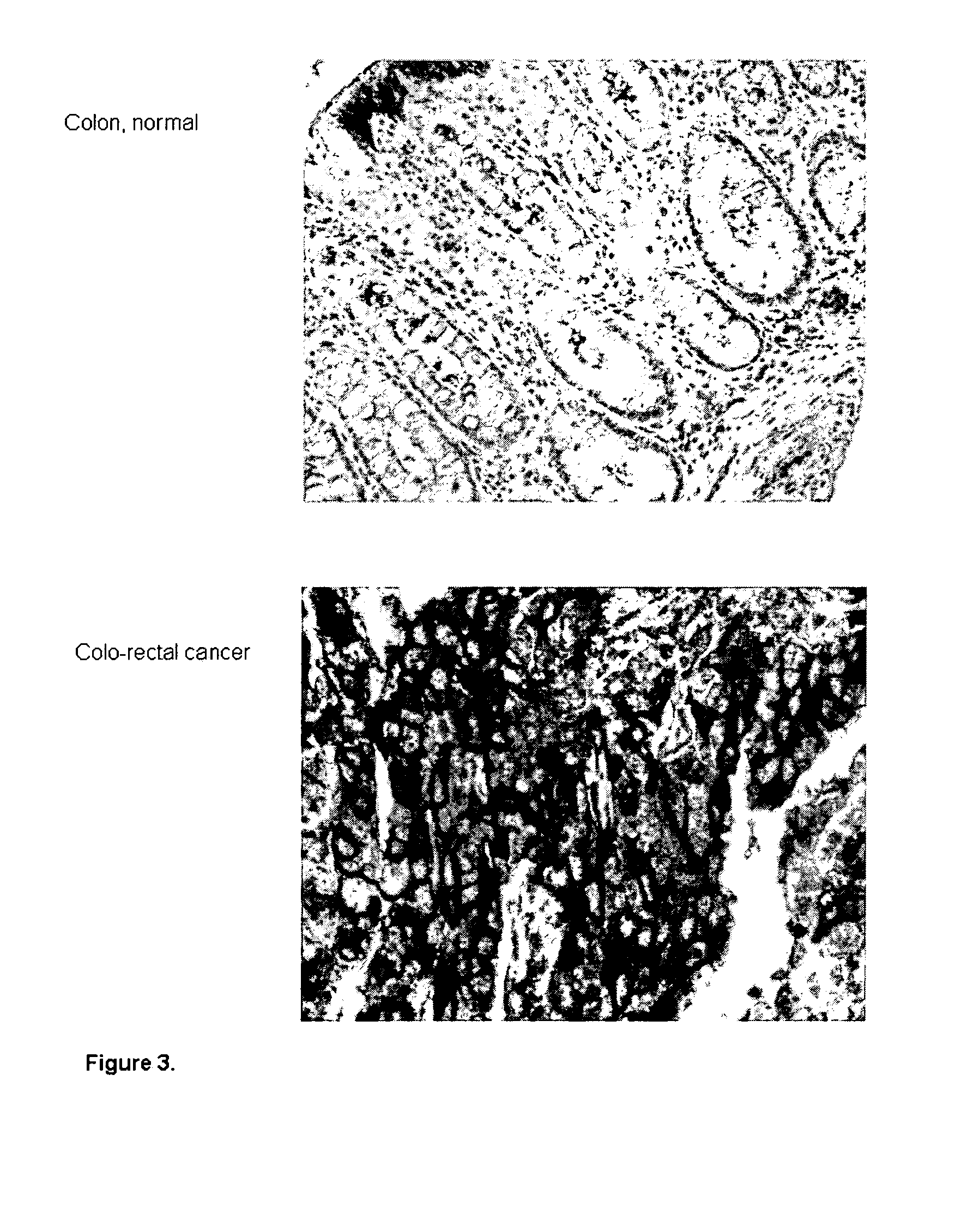Tumor Marker and Methods of Use Thereof
a tumor marker and marker technology, applied in the field of tumor markers, can solve the problems of insufficient specificity and sensitivity of most biomarkers commonly used in clinical practice, insufficient specificity and specificity to unambiguously distinguish tumors, and insufficient ca 125 measurement to be used to screen all women, etc., to achieve the effect of inhibiting or abolishing the activity of a target protein and enhancing their
- Summary
- Abstract
- Description
- Claims
- Application Information
AI Technical Summary
Benefits of technology
Problems solved by technology
Method used
Image
Examples
example 1
Generation of Recombinant SCARA5 and Anti-SCARA5 Antibodies to Detect the Expression of SCARA5 in Tumor Samples
[0078]Methods
[0079]The entire coding region or suitable fragments of the SCARA5 gene encoding the target protein, were designed for cloning and expression using bioinformatic tools with the human genome sequence as template (Lindskog M et al (2005). The leader sequence for secretion was replaced with the ATG codon to drive the expression of the recombinant proteins in the cytoplasm of E. coli. For cloning, genes were PCR-amplified from cDNAs mixtures generated from pools of total RNA derived from Human testis, Human placenta, Human bone marrow, Human fetal brain, using specific primers. Clonings were designed so as to fuse a 10 histidine tag sequence at the 3′ end, annealed to in house developed vectors, derivatives of vector pSP73 (Promega) adapted for the T4 ligation independent cloning method (9) and used to transform E. coli NovaBlue cells recipient strain. E. coli tran...
example 2
Tissue Profiling by Immune-Histochemistry
[0085]Methods
[0086]The analysis of the antibody capability to recognize their target proteins in tumor samples was carried out by Tissue Micro Array (TMA), a miniaturized immuno-histochemistry technology suitable for HTP analysis that allows to analyse the antibody immuno-reactivity simultaneously on different tissue samples immobilized on a microscope slide.
[0087]Since the TMAs include both tumor and healthy tissues, the specificity of the antibodies for the tumors can be immediately appreciated. The use of this technology, differently from approaches based on transcription profile, has the important advantage of giving a first hand evaluation on the potential of the markers in clinics. Conversely, since mRNA levels not always correlate with protein levels (approx. 50% correlation), studies based on transcription profile do not provide solid information regarding the expression of protein markers.
[0088]A tissue microarray was prepared contai...
example 3
Confirmation of the Marker Association with the Tumor / s by Expanded IHC Analysis
[0095]Methods
[0096]The association of each protein with the indicated tumors was further confirmed on a larger collection of clinical samples for each tumor. To this aim, a tissue microarray was prepared for each of the four tumor classes containing 100 formalin-fixed paraffin-embedded cores of human tissues from 50 patients (equal to two tissue samples from each patient). The TMAs were stained with the SCARA5-antibodies, using the previously reported procedure. The staining results were evaluated, as above described, by a trained pathologist at the light microscope.
[0097]Results
[0098]Four TMA designs were obtained, for each of the four tumors, representing tissue samples from 50 patients. The results from tissue analysis showed that the anti-SCARA5 antibodies are strongly immune-reactive on a significant percentage of tissues from breast, colon, lung and ovary tumors indicating that the SCARA5 protein i...
PUM
| Property | Measurement | Unit |
|---|---|---|
| temperature | aaaaa | aaaaa |
| pH | aaaaa | aaaaa |
| diameter | aaaaa | aaaaa |
Abstract
Description
Claims
Application Information
 Login to View More
Login to View More - R&D
- Intellectual Property
- Life Sciences
- Materials
- Tech Scout
- Unparalleled Data Quality
- Higher Quality Content
- 60% Fewer Hallucinations
Browse by: Latest US Patents, China's latest patents, Technical Efficacy Thesaurus, Application Domain, Technology Topic, Popular Technical Reports.
© 2025 PatSnap. All rights reserved.Legal|Privacy policy|Modern Slavery Act Transparency Statement|Sitemap|About US| Contact US: help@patsnap.com



